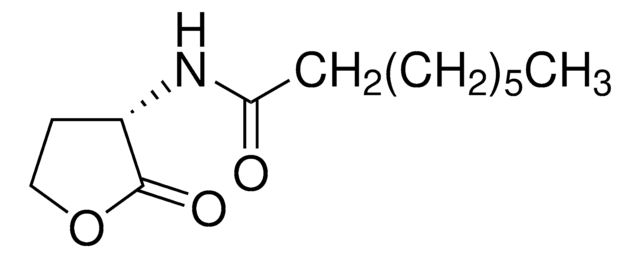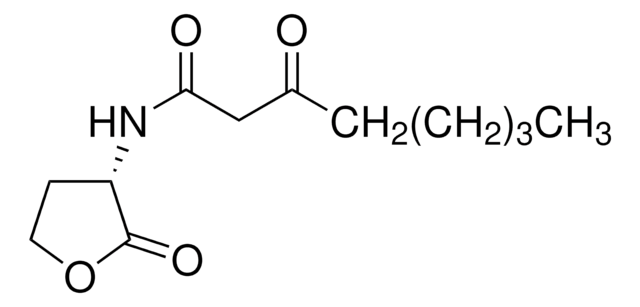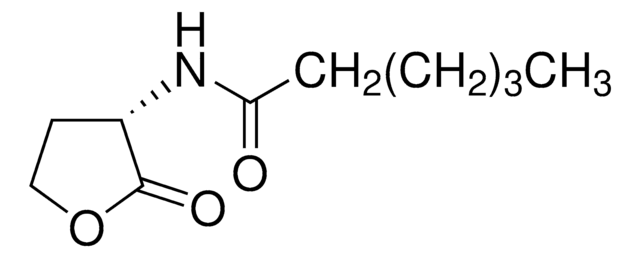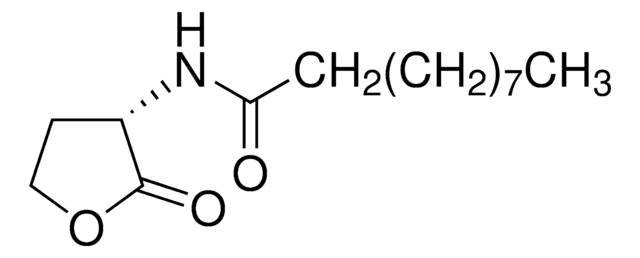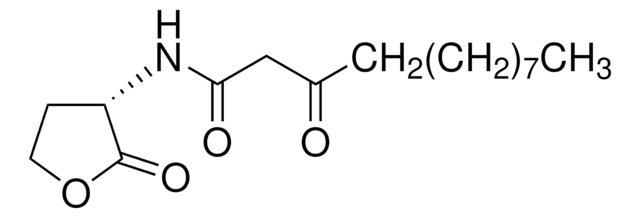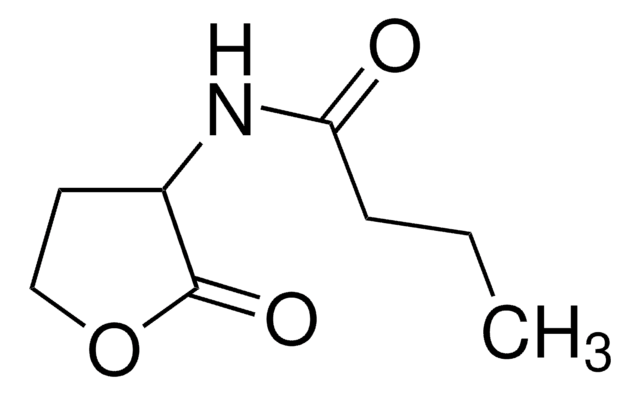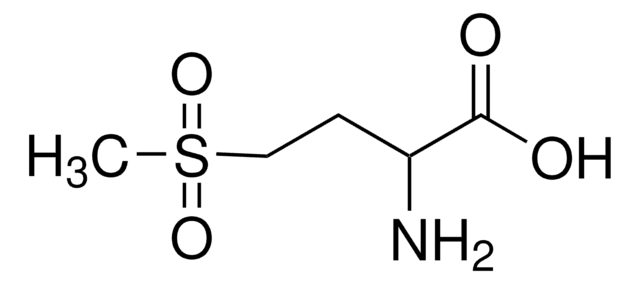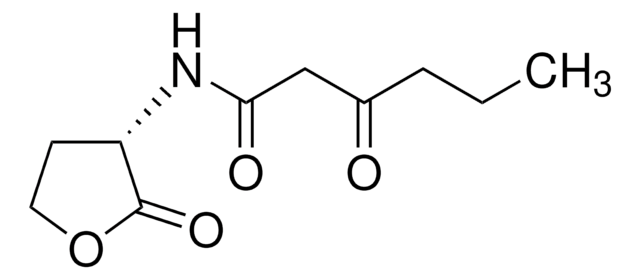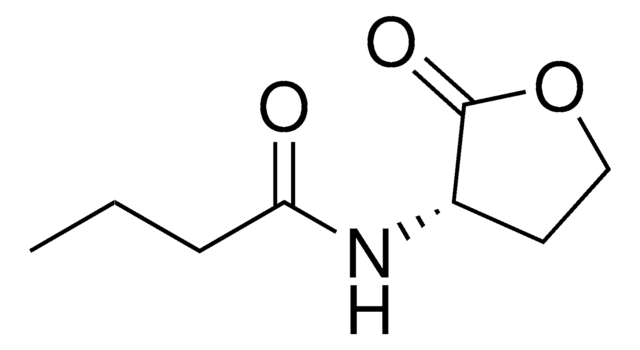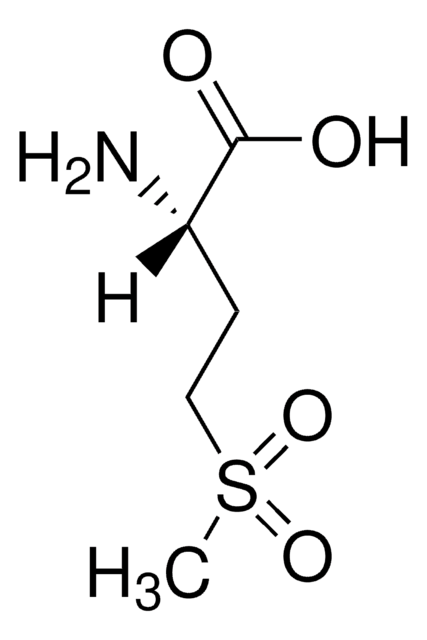68224
N-Dodecanoyl-L-homoserine lactone
≥96% (HPLC), suitable for mass spectrometry (MS)
Synonym(s):
N-Lauroyl-L-homoserine lactone, N-[(3S)-Tetrahydro-2-oxo-3-furanyl]dodecanamide, C12-HSL
About This Item
Recommended Products
Product Name
N-Dodecanoyl-L-homoserine lactone, ≥96% (HPLC)
Quality Level
Assay
≥96% (HPLC)
form
powder or crystals
optical activity
[α]/D -25±5°, c = 0.2 in methanol
technique(s)
mass spectrometry (MS): suitable
color
white to off-white
suitability
conforms to structure for Proton NMR spectrum
storage temp.
−20°C
SMILES string
O=C1OCC[C@@H]1NC(CCCCCCCCCCC)=O
InChI
1S/C16H29NO3/c1-2-3-4-5-6-7-8-9-10-11-15(18)17-14-12-13-20-16(14)19/h14H,2-13H2,1H3,(H,17,18)/t14-/m0/s1
InChI key
WILLZMOKUUPJSL-AWEZNQCLSA-N
Biochem/physiol Actions
Hazard Statements
Hazard Classifications
Aquatic Chronic 4
Storage Class Code
11 - Combustible Solids
WGK
WGK 3
Flash Point(F)
Not applicable
Flash Point(C)
Not applicable
Choose from one of the most recent versions:
Already Own This Product?
Find documentation for the products that you have recently purchased in the Document Library.
Our team of scientists has experience in all areas of research including Life Science, Material Science, Chemical Synthesis, Chromatography, Analytical and many others.
Contact Technical Service